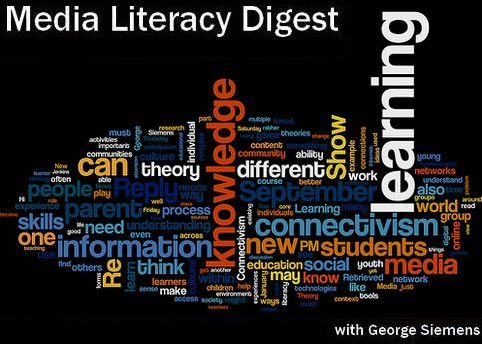Are social media, social? (Part Four)
 Tuesday, May 11, 2010 at 3:51PM
Tuesday, May 11, 2010 at 3:51PM Heidi May has produced some important comments on the previous entries of Are Social Media, Social? May suggested a link to Network, A Networked Book about Network Art which is a fascinating example of the extensions that are possible when communities of interest establish a context to work together and collaborate. Heidi May also asks about the Diaspora project. Diaspora will attempt to build an open source version of Facebook. I wish them luck. This is an essential move to broaden the scope and expectations that we have about the role and usage of social networks, about privacy and most importantly about controlling the very code that governs how we relate within virtual spaces.
A good example of some of the challenges that we face within networked environments is what happened to the famous German philosopher, Jürgen Habermas. “In January, one of the world’s leading intellectuals fell prey to an internet hoax. An anonymous prankster set up a fake Twitter feed purporting to be by Jürgen Habermas, professor emeritus of philosophy at the Johann Wolfgang Goethe University of Frankfurt. “It irritated me because the sender’s identity was a fake,” Habermas told me recently. Like Apple co-founder Steve Jobs, Zimbabwean president Robert Mugabe and former US secretary of state Condoleezza Rice before him, Habermas had been “twitterjacked”.” Stuart Jeffries Financial Times, April 30, 2010.
As it turns out the hoax was removed but not before the individual was found and apologized. Subsequently, Habermas was interviewed and made this comment:
“The internet generates a centrifugal force,” Habemas says. “It releases an anarchic wave of highly fragmented circuits of communication that infrequently overlap. Of course, the spontaneous and egalitarian nature of unlimited communication can have subversive effects under authoritarian regimes. But the web itself does not produce any public spheres. Its structure is not suited to focusing the attention of a dispersed public of citizens who form opinions simultaneously on the same topics and contributions which have been scrutinised and filtered by experts.”
Habermas suggests that power resides with the State even when social networks bring people together to protest and demonstrate. The results of these engagements are contingent and don’t necessarily lead to change or to the enlargement of the public sphere.
The question is how does the public become enlightened? What conditions will allow for and encourage rich interchanges that will drive new perceptions of power and new ideas about power relations?
The general assumption is that social networks facilitate the growth of constructive public debate. Yet, if that were true how can one explain the nature of the debates in the US around health care which were characterized by some of the most vitriolic exchanges in a generation? How do we explain the restrictive and generally anti-immigrant laws introduced by the state of Arizona? The utopian view of social networks tends to gloss over these contradictions. Yes, it is true that Twitter was banned in Iran during the popular uprising last year to prevent protestors from communicating with each other. Yes, social media can be used for good and bad. There is nothing inherent in social networks, nothing latent within their structure that prevents them being used for enhanced exchange and debate. For debates to be public however, there has to be a sense that the debates are visible to a variety of different constituencies. The challenge is that the networks are not visible to each other — mapping them produces interesting lattice-related structures but these say very little about the contents of the interactions.
The overall effect could be described as mythic since we cannot connect to ten thousand people or know what they are saying to each other. At a minimum, the public sphere takes on a visible face through traditional forms of broadcast that can be experienced simultaneously by many different people. Twitter on the other hand, allows us to see trends but that may often not be enough to make a judgment about currency and our capacity to intervene. Is the headline structure of Twitter enough? Should it be?
The computer screen remains the main interface and mediator between the movement of ideas from discourse to action. And, as I have discussed in previous posts, networks are abstracted instances of complex, quantitatively driven relationships. We need more research and perhaps establishing a social network to do this would help, more research on whether social media are actually driving towards increasingly fragmented forms of interaction. A question. How many of your followers have you met? How many people leave comments on your blog and what is the relationship between hits and comments? Beyond the ten or so web sites that everyone visits, how many have settled into a regular routine not unlike bulletin boards of old?
The recent election campaign won by President Obama in which social media played a formidable role suggests that my questions may have no pertinence to his success. Consumer campaigns and boycotts made all the more practical and possible by social networks suggests the opposite of what I am saying. The potential intimacy of dialogues among strangers working together to figure out problems and meet challenges may contradict my intuition that these are variations on existing networks albeit with some dramatic enhancements.
A final thought. We often talk about the speed with which these phenomena develop without referencing their predecessors. For example, if the Web is just an extension of bulletin boards and hypercard systems then we need to understand how that continuity has been built and upon what premises. If Twitter is an extension of daily conversation and is helping to build the public sphere then we need more research on what is being said and actually examine whether Twitters translate into action.




